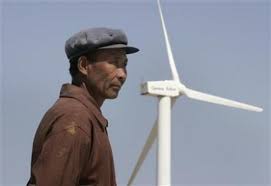
Earlier this month, in Washington D. C. at one of the largest electrical engineering conferences in the world, a speaker from the State Grid Corporation of China outlined a vision for a massive global electricity grid powered by renewables.
Zhenya Liu is the Chairman of the State Grid Corporation of China and his company is the largest state-owned electric utility company in the world. Mr Liu presented a visionary proposal for a vast high voltage transmission network, the “Global Energy Internet”, sharing renewable power around the world. Australia and other renewable rich nations would have the opportunity to become major renewable energy exporters. He proposed this plan as not only sensible and realistic, but a moral imperative for sustainable development.
Given the traditionally conservative context of the conference, it’s a staggeringly ambitious vision that raised eyebrows. But given the authority of the speaker, it has been given serious credibility.
China is working towards this vision in a very practical sense, constructing a vast high voltage transmission network and investing heavily in renewables. In fact, last year China installed more renewable capacity than all other types of generation combined. They also invested more money in renewables than any other nation, and installed more wind power and solar photovoltaic capacity than any other nation.
China has lots of reasons for investing in renewable energy. One of the most obvious is their serious air pollution problem. They also seek to increase demand for the renewable technologies they manufacture. Energy security is also a major concern – a number of studies have now shown that China is perilously close to peak domestic coal production, which means they will soon become a major importer of coal if they don’t curb consumption. They have no desire to be dependent upon a potentially volatile international fossil fuel market. But whatever their reasons, China is most definitely leading the world to a more renewable future. Mr Liu’s presentation invited the rest of us to join them.
The global engineering community is certainly rallying to the cry. Renewable technologies now dominate electricity sector investment in Europe, the USA and the world. We’re seeing a fundamental shift in attitude – overwhelmingly renewables have been embraced as the new norm, and engineers at all levels are setting about the work of determining smarter ways to integrate them. No longer fringe, renewables are being called upon to become a full participant in the system.
As others move ahead, Australia’s once vibrant renewable sector is stagnating under the perpetual policy uncertainty. Australia is falling behind the rest of the world. The repeal of the carbon price sends a discouraging message to potential investors, and the review of the Renewable Energy Target scheme has halted promising projects. How much longer can we afford to wait, while the rest of the world moves on without us?
Dr Riesz is a Research Associate at the Centre for Energy and Environmental Markets, at the University of New South Wales. Her research focuses on electricity market design for renewable integration. http://jenny.riesz.com.au/










